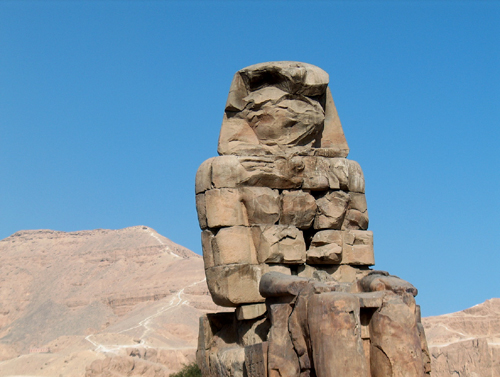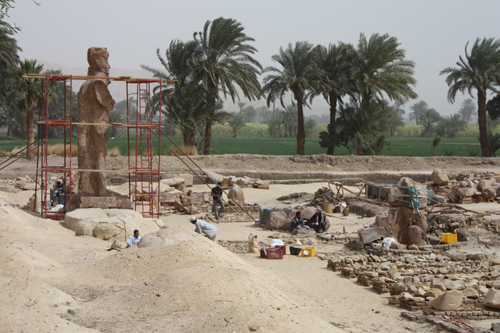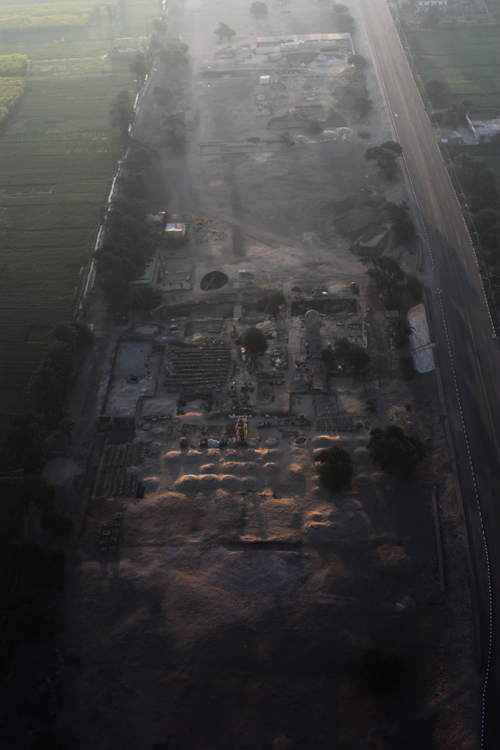The statues are made from blocks of quartzite sandstone which was stone quarried at el-Gabal el-Ahmar (near modern-day Cairo) and transported 420 miles overland to Thebes. (They are too heavy to have been transported upstream on the Nile.) The blocks used by later Roman engineers to reconstruct the eastern colossus may have come from Edfu (north of Aswan). Including the stone platforms on which they stand (about 4 meters themselves), the colossi reach a towering 18 metres (approx. 60 ft) in height and weigh an estimated 700 tons each.
Both statues are quite damaged, with the features above the waist virtually unrecognizable. The western (or southern) statue is a single piece of stone, but the eastern (or northern) figure has a large extentive crack in the lower half and above the waist consists of 5 tiers of stone. These upper levels consist of a different type of sandstone, and are the result of a later (Roman Empire) reconstruction attempt. It is believed that originally the two statues were identical to each other, although inscriptions and minor art may have varied. The two figures are about 50 feet apart.
The original function of the Colossi was to stand guard at the entrance to Amenhotep's memorial temple (or mortuary temple): a massive cult centre built during the pharaoh's lifetime, where he was worshipped as a god-on-earth both before and after his departure from this world. In its day, this temple complex was the largest and most opulent in Egypt. Covering a total of 35 ha, even later rivals such as Ramesses II's Ramesseum or Ramesses III's Medinet Habu were unable to match it in area; even the Temple of Karnak, as it stood in Amenhotep's time, was smaller.With the exception of the Colossi, however, very little remains today of Amenhotep's temple. Standing on the edge of the Nile floodplain, successive annual inundations gnawed away at the foundations – a famous 1840s lithograph by David Roberts shows the Colossi surrounded by water – and it was not unknown for later rulers to dismantle, purloin, and reuse portions of their predecessors' monuments.


